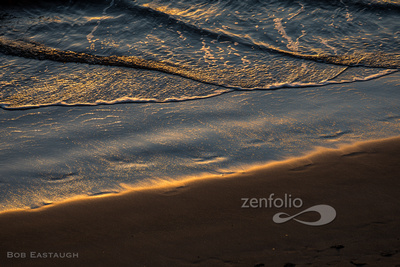Lost (or Found) in Translation - Converting Vision to Image (Various)
What you see (or think you see) is not always what you get. Especially for photographers, whose vision doesn't always translate to image. Various things can cause a vision to be lost in translation. But before discussing translation, it is worth taking a step backward to consider the concept of vision, meaning not only what the photographer chooses to see (mentally or in the viewfinder), but also what the photographer could see. After all, the perfect translation of a shopping list from French to English is unlikely to equal the perfect translation of one paragraph written in French by Balzac. Image possibilities begin with vision, not realization. Before considering how to translate without loss, it is necessary to consider what to translate. That can mean expanding vision.
For photographers, vision ultimately means seeing (or imagining) something interesting enough to photograph, i.e., seeing something interesting enough to cause the photographer to pick up a camera and maybe expose an image. No two people would be likely to agree completely on what qualifies as "interesting enough." They might agree about a given sunset, tourist attraction, wild animal, or, perhaps, their respective family members. Most would not agree about rocks (Weston) or vegetables (Weston, again) or clouds (Stieglitz) or children playing in the street (Cartier-Bresson) or New York denizens (Winogrand) or New York in winter (Stieglitz, again) or migrant workers (Lange) or stolid buildings (Atget) or wood (White) or geometric abstractions (Strand) until - maybe - after they had seen those subjects as depicted by those masters. And then the real source of their interest would more likely be admiration for those depictions, not intrinsic interest in those subjects. Few, even after seeing human oddities captured by Arbus, would go out of their way to find and photograph similar subjects, no matter how much they might admire Arbus's work. Not many would try, like Atget, to chronicle "ordinary" buildings, even in Paris.
How to enlarge vision? Few writers of grocery lists have the ability to imagine a scene Balzac might have described, but that shouldn't keep them from trying.
As an act of vision, seeing may depend on biological niceties, such as one's visual accuity, or on professional/avocational factors. In the forest, the ornithologist is more likely to walk with vision attuned to bird shapes and movements and habitat. The mycologist is more likely to walk with vision downcast. The florist is more likely to look for blooms. But ultimately, deciding whether what is seen is interesting enough to be photographed is intensely idiosyncratic. And even after choosing to raise the camera, the photographer may decide the scene is not interesting enough to warrant an exposure. Even after pressing the shutter, the photographer may decide the scene wasn't interesting enough, eliciting a mental shrug of indifference or deletion.
But there can't be a depiction unless there is first an image recorded. We must return to the idiosyncratic choices made at the outset. The omnivore looks for everything. Garry Winogrand stalked the streets of New York, interested in everything relating to humans. His vision was broad: he claimed he photographed things to see what they looked like photographed. That might explain why he was so prolific (he left about 3,000 rolls of unprocessed film when he died), but that might also have just been a clever and ironic throwaway line.
So for some, the idiosyncratic measure of "interesting enough" really means a willingness to take (or make) a picture that few others would. The resulting outlier images of outlier subjects are "just of" pictures: they are "just of" rocks, vegetables, children playing in the street, New York denizens, and so on, and not of sunsets, tourist attractions, or wild animals.
Here are a few relatively recent "just of" pictures.
Rocks:














Sand:




Vegetables:














Clouds:












Comments


After a lifetime of mainly expressing myself with words, my postings here will mainly rely on images. They will speak for themselves to some extent, but I'll usually add a few comments of explanation. I've taken photographs for decades, since the 1950's, inspired in part by my father's photographic skill. Four years of photo assignments and quality darkroom time eventually gave way to decades of casual and family picture-taking. I re-immersed myself when I left film and turned to digital.